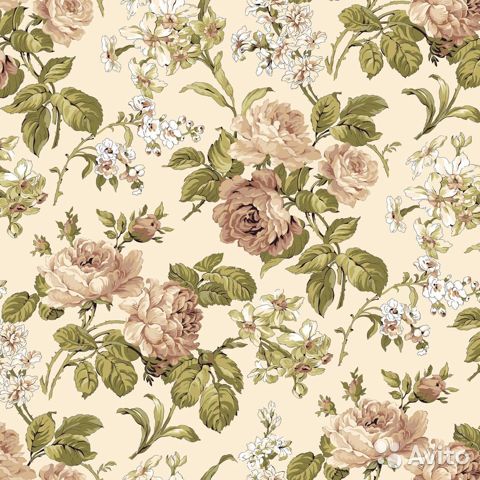
creativecommons.org
The Prokhorov rose is one of the oldest Russian fabric ornaments, which is still quite actively used today. In this article you will find the history of the origin of fabric with the “Prokhorov rose” pattern, its composition and a detailed description of the characteristics. In the material you will also see examples of the use of this fabric.
History of the Prokhorovskaya rose fabric
The classic version of the fabric with the “Prokhorov’s rose” ornament depicts newly blooming tea roses, flowers about which romances were composed and poems were written. Fabrics with the “Prokhorov’s rose” print appeared at the famous Trekhgornaya manufactory. It is believed that this was one of the first fabrics and the date of its birth can be considered the year the enterprise was founded, 1799. The print immediately gained popularity and began to be actively used by housewives when sewing linen, curtains and decorative pillows.Later, a huge number of variations on the theme appeared using various types of roses of other colors, but this particular fabric entered the history of Russian textiles.
The first “Prokhorov's Rose” print became popular, partly due to the fact that at the time of its creation, calico printing was not sufficiently developed in Russia. Until this turning point, all textiles were handled mainly by craftswomen, who, no matter how much they wanted, could not be so effective. In fact, the history of the domestic calico printing business began in the last year of the 18th century, when an agreement was concluded between the Moscow merchant Vasily Prokhorov, who invested his money in the business, and his business partner Fyodor Rezanov, who had extensive knowledge of fabrics and was responsible for the applied part. According to legend, this agreement was oral, but both merchants kept their word and the Prokhorov Trekhgornaya Manufactory was opened in Moscow. The most difficult moment of development was not even the purchase of equipment, but the recruitment and training of workers and craftsmen.
The weaving factories were finally completed only in 1810. At first, the manufactory did not purchase samples of drawings and patents for them in Europe, but relied on Russian artists. This is how one of the first fabrics with the “Prokhorov rose” ornament and other folk patterns appeared. The originality of Russian draftsmen can be seen in many patterns that refer to Persian and Byzantine traditions. However, not everything went smoothly at the factory: two years later, disagreements arose between Prokhorov and Rezanov and they decided to split the business. The situation became more complicated in 1812, when the French virtually destroyed production.The separation was finally completed only in 1920, when the business of the merchant Prokhorov had long been taken over by his son, Timofey. By that time, the manufactory produced mainly jacquard fabrics, scarves, shawls and bedspreads.
By 1830, the Prokhorovskaya manufactory became the first in Russia in terms of quality thanks to the purchase of new equipment - foreign steam engines. And after some time, the founder’s grandchildren are already trying to optimize the operation of the enterprise and reduce the cost of the final product by switching to new fuel, peat, and are even independently developing the Butyrsky peat bog.
In 1877, the factory located near the Moscow River burned to the ground along with all its equipment and goods - only the manufactory on Three Mountains and the purchased factory in Serpukhov remained. The new generation of Prokhorovs pays attention to the chemical process and places emphasis on this stage of processing cotton fabrics, so the design on the fabrics (in particular the famous “Prokhorov rose” ornament) becomes brighter.
Like most other enterprises, the Prokhorovskaya Manufactory was nationalized in 1918, and a year later it was renamed the Krasnopresnenskaya Trekhgornaya Manufactory. By 1925, the range of fabrics expanded and the range of goods changed, but the “Prokhorov’s rose” ornament regularly appeared on satin and then fashionable crepe. The Prokhorovskaya Trekhgornaya manufactory was closed in March 2020, but the legendary fabrics with the “Prokhorovskaya rose” ornament can still be bought in online stores.
What is the composition of Prokhorovskaya rose fabric?
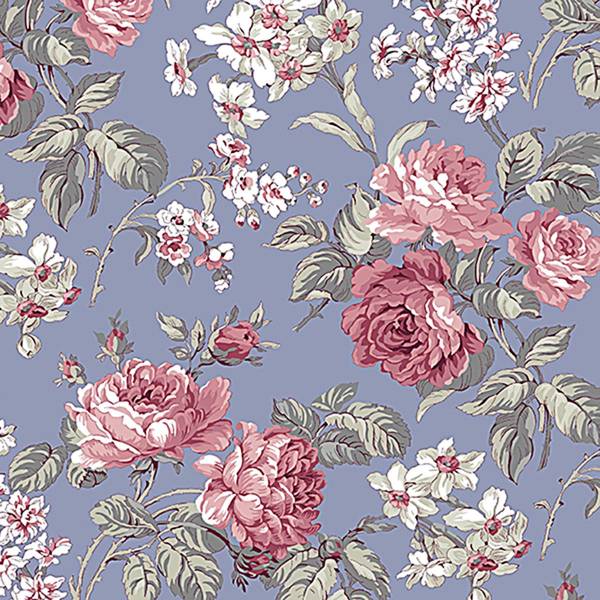
creativecommons.org
The “Prokhorov rose” pattern can be used on almost any fabric, but most often it is transferred to cotton, linen, satin, and calico.This pattern can rarely be seen on waffle towels (if only it is sewn for a single set) and on clothes. The fabric is mainly used for individual tailoring of interior details: curtains, bed linen, decorative pillows and even wall panels. Since the “Prokhorov rose” ornament is quite mandatory, a lot depends on the quality of the fabric, its density and texture. If you decide to sew a set for yourself, you should not skimp on quality, as this will affect the appearance of the product.
Properties of the Prokhorovskaya rose fabric and does it stretch?
Since fabrics with the Prokhorov rose pattern are different, their properties are also different. Most often, fabrics that are not very stretchy are used for bed linen and clothing: cotton, linen, satin and chintz. We do not recommend purchasing polyester fabrics for sewing bed linen, since most often this material is not comfortable to use, attracts more dust and becomes electrified. The same rule applies to materials for sewing clothes, although they are extremely rarely sewn from fabric with such an ornament. Polyester material with the Prokhorov rose pattern can be used for sewing curtains and bedspreads.
Where can you use Prokhorovskaya rose fabric?
The specific fabric pattern “Prokhorovskaya rose” is a very necessary decoration for the interior. All other furnishings should be as neutral as possible, so that all attention is directed to the Prokhorov Rose fabrics and their pattern.Despite its popularity among manufacturers, they prefer to use this type of material to sew single sets for bedrooms and kitchens, including: bed linen, bedspread, decorative pillows for a bed or sofa, curtains, tablecloth, towels, napkins and potholders.
Clothes made from fabrics with the “Prokhorov's rose” print are sewn relatively rarely due to the rather large pattern, but dresses and home sets made from this material are on sale.


 0
0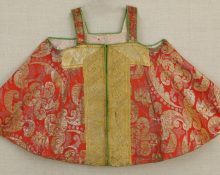



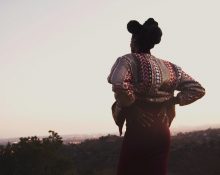
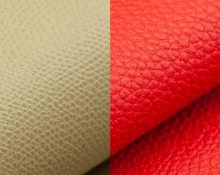

What is “obligatory interior decoration”? Mandatory decoration?